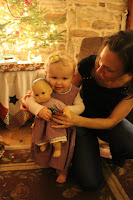One of the typical white wines from the southern part of Bordeaux is Sauterne. This sweet white
wine is produced in the five small villages that make up the Sauternais appellation in Bordeaux, south of
Graves. Sauterne is typically made from a blend of the two white Bordeaux grapes: Sauvignon Blanc
and Semillon. Sometimes Muscadelle grapes are also included, usually at less than 3%.
The
sweetness of Sauterne is not from a late harvest, but rather from botrytis, or
Noble Rot, which develops
during cool humid nights and warm, dry days at time of maturity. These humid conditions develop
because the two rivers in this area, the Ciron and Garonne, have different temperatures, which cause
the misting phenomenon.
The botrytis dries out the grape berries which leads to a concentration of
flavors and aromas, as well as a concentration of sugar, which are the foundation of a very rich, full
bodied, incredibly flavorful wine.
The botrytized grapes are hand-selected, hand-harvested, pressed, and fermented. Their high sugar
levels causes the alcohol level to reach as high as 15% to 16%, at which point the yeast cells die.
Fermentation ends with as much as 7% residual sugar!
Sauterne is usually aged in oak, anywhere from
18 months to 3 + years before bottling. Bottles can be consumed young, or aged for many years. The
longer it is aged, the more amber the color and the more complex the flavors.
Sauterne is a very rich, sweet wine that is balanced by high levels of acidity. Aromas include honey,
melon, pineapple, mango, papaya and dried apricots. It can be very complex and flavorful, and it is
serves as an aperitif as well as dinner or dessert wine. Because of the time consuming harvest and
production, Sauterne is one of the most expensive wines, and often under-appreciated. Here is a
link to a recent article in the NYT about this specialty wine.
 But then we experimented with making fruit leather - the fruit roll-up kind of snacks. We thawed out some of our seedless blackberry puree (the same kind we use for making jam), and then cooked it with SureJel and sugar, only we used more than twice the amount of fruit than the jam recipe calls for. This thickened the puree enough to be able to spread it on the trays of the dehydrator. I should mention that we got non-stick silicon sheets for the trays - which was very helpful.
But then we experimented with making fruit leather - the fruit roll-up kind of snacks. We thawed out some of our seedless blackberry puree (the same kind we use for making jam), and then cooked it with SureJel and sugar, only we used more than twice the amount of fruit than the jam recipe calls for. This thickened the puree enough to be able to spread it on the trays of the dehydrator. I should mention that we got non-stick silicon sheets for the trays - which was very helpful.












